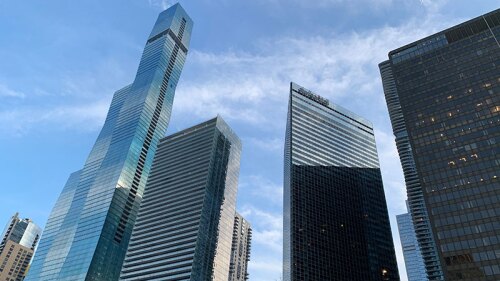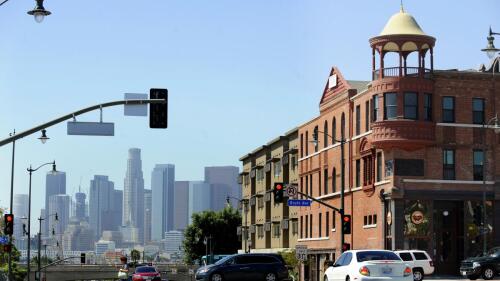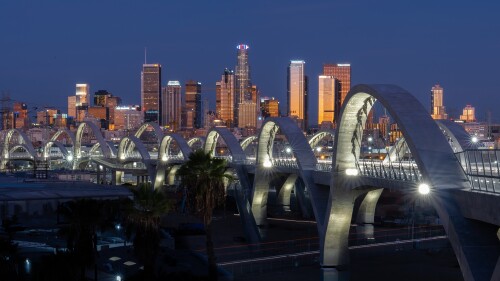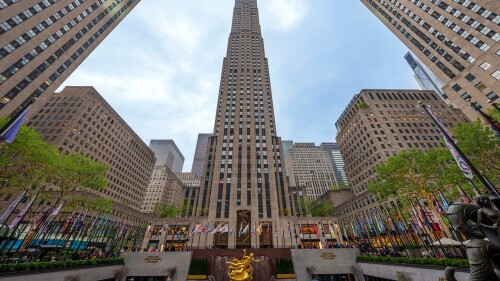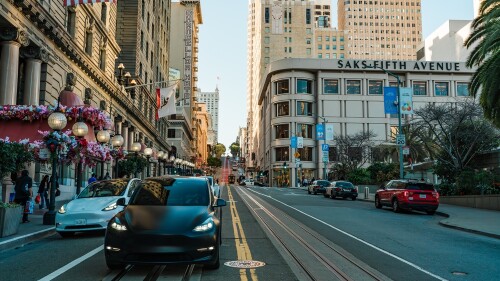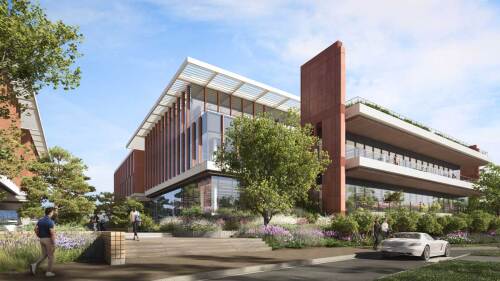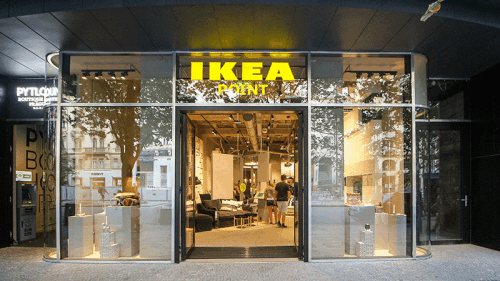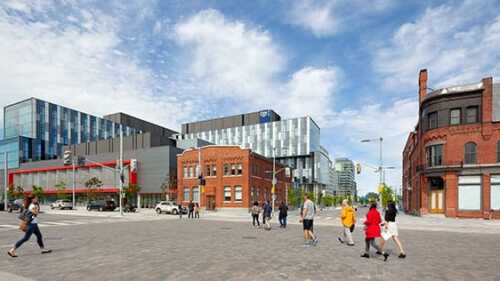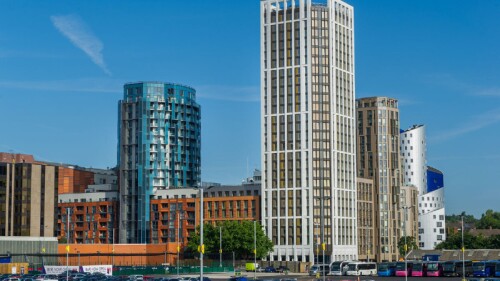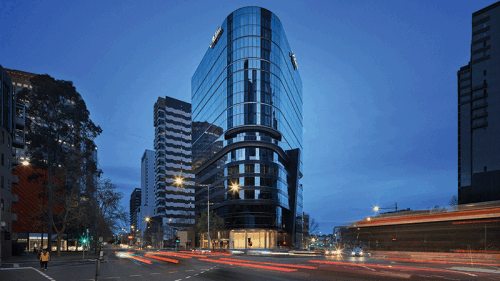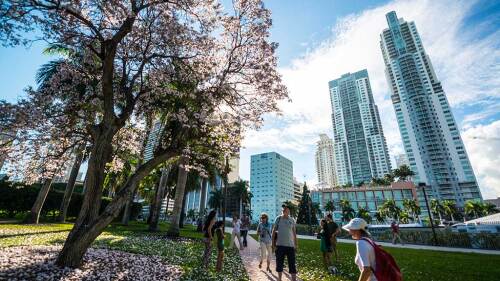Markets
Chicago
Fall meeting attendees toured on foot this dynamic and exciting community in Chicago that is evolving differently than any other Chinatown in America. A neighborhood rich with historic and award-winning contemporary architecture, this proud community is fighting gentrification while retaining its cultural significance.
Eight new hotels are now under construction in Chicago’s central business district, totaling about 1,500 new rooms, according to the latest list from STR Group. Developers are also planning to start construction on more than a dozen other new hotel projects, totaling an additional 3,700 new rooms.
Ten bridges for walkers and bicyclists creatively span waterways, roads, and railway tracks.
Dallas
Dallas/Fort Worth International Airport is the most successful American template for how a major airport can become a core for real estate development and economic growth. Now, planning is taking it to a higher altitude.
Los Angeles
Multifamily experts gathered at the University of Southern California to highlight where denser construction is creating affordability.
On September 30, 2024, green banks, community development financial institutions (CDFIs), nonprofits, tribal organizations, state and local governments, and coalitions nationwide received funding from the Greenhouse Gas Reduction Fund (GGRF), a historic $27 billion investment by the United States federal government to mobilize private capital to combat the climate crisis. As the GGRF is activated, Americans have an array of policies, standards, tools, and data, plus more than a decade of experience, as well as much greater political support for action on climate and social equity issues.
As cities confront the housing crisis, they face intersecting challenges: opposition not only to affordable-housing development but often to any development; spiraling financing and construction costs; outdated zoning that stifles or misplaces growth; egregious bureaucratic barriers; and issues around displacement and historic preservation. But some cities have an asset that can serve as a testing ground for harmonizing urgent priorities: their downtown districts.
New York City
How urban planners are turning public places into vibrant centers for living, working, learning, and socializing.
According to the World Green Building Council, buildings currently account for a staggering 39 percent of global emissions, while trillions of dollars’ worth of real estate assets are at risk due to climate-related disasters. At the same time, utility providers are struggling to scale infrastructure to meet growing energy demands spurred by economic growth and development and unprecedented temperature extremes resulting in higher than usual utility charges and devastating outages. Now more than ever, the industry’s progress toward net zero emissions and resilience is critical.
RXR CEO and Chairman Scott Rechler, in a recent ULI members-only webinar with ULI Foundation Chair Faron A. Hill, described the challenges and opportunities ahead as an epic, unavoidable storm. “That hurricane … eventually, it’s going to hit land,” Rechler warned. “The question is when it hits, how hard it hits, and where it hits the hardest.”
San Francisco
ULI San Francisco recently hosted a panel revisiting the recommendations made by ULI Advisory Servies panelists to revive the downtown and highlighting the progress that has been made.
Berkeley, California, is emerging as a hub for life sciences and technology firms, with new developments opening in the West Berkeley neighborhood. In June, ULI San Francisco hosted a walking tour through two campuses targeting life sciences research and development tenants at the eastern edge of the San Francisco Bay: theLAB Berkeley and Berkeley Commons.
Companies including Macy’s, Nordstrom, Kohl’s, and IKEA are rolling out small-format stores around the country, often in suburban areas, as they try other ways to connect with their customers.
Toronto
A graduate student team from Cornell University, two teams from the Georgia Institute of Technology, and a team from the University of Maryland have been selected as the four finalists for the 16th annual ULI Hines Student Competition, an ideas competition that provides students the opportunity to devise a comprehensive design and development scheme for a large-scale site in an urban area.
In 2003, Waterfront Toronto, a tri-government agency, undertook the transformation of 79 acres (32 ha) of provincially owned brownfields in Toronto’s downtown east end. The West Don Lands project was designed through extensive community engagement and collaboration between government and the private sector. The result was an award-winning precinct plan for a pedestrian-focused community—built around parks, with housing for people of all ages, income levels, and abilities; well served by transit, retail, and community amenities; and developed in accordance with stringent sustainability requirements.
The following ten projects—all completed during the past five years—include facilities that strengthen pedestrian links to waterfronts, renovated buildings that open up interiors to views and daylight, and a converted JCPenney department store.
London
Regulatory environment among the barriers to more adoption of modular construction techniques in Europe.
10 structures showcase the lightweight, carbon-sequestering power of mass timber.
According to the latest Emerging Trends in Real Estate® Europe report from PwC and ULI, 75 percent of real estate leaders agree current valuations “do not accurately reflect” all the challenges and opportunities in real estate, as a wedge continues to be driven between market price expectations and book valuations.
Paris
Ten built environment projects from eight countries across the EMEA region have been announced as the finalists in the sixth annual ULI Europe Awards for Excellence, which recognize exemplary projects and programs in the private, public, and non-profit sectors. This year’s finalists comprise cutting edge refurbishment, restoration and new build projects, and include residential, healthcare, mixed use, education, community, laboratory, and office projects from Italy, Germany, the UK, Belgium, Sweden, Denmark, France, and Spain.
Although ready to commence a new real estate cycle, real estate leaders globally are braced for another challenging year of uncertainty, with lingering inflation, largely driven by factors including geopolitical instability, and persistently higher interest rates in some regions, potentially delaying a hoped-for recovery in capital markets and occupancy metrics. This is according to the Emerging Trends in Real Estate® Global Outlook 2025 from PwC and ULI, which provides an important gauge of global sentiment for investment and development prospects, amalgamating and updating three regional reports which canvassed thousands of real estate leaders across Europe, the United States and Asia Pacific.
The outlook for the European real estate market is cautiously optimistic despite growing geopolitical uncertainty and concerns about economic growth, with London, Madrid, and Paris emerging as the standout performers, according to a new report by PwC and the Institute.
Hong Kong
Two of Asia’s leading entrepreneurs gave real estate investors a glimpse into the worlds of Web 3.0 and deep tech at the ULI Asia Pacific Summit.
Technology and contributions from all stakeholders will be crucial if Asia’s cities are to meet their net zero targets. Earlier this year, a series of three webinars organized by ULI China Mainland covered the efforts and challenges of several cities and organizations around the world to give some focus to the efforts in Beijing, which is one of the cities in ULI’s Net Zero Imperative initiative. The discussions also focused on the Chinese capital as well as Hong Kong and Singapore.
Ensuring inclusion and access to all, embodying Hong Kong’s societal values and global identity, safeguarding Hong Kong’s heritage for future generations, and committing to sustainability are among some of the ideas suggested in a new ULI report on how a Hong Kong harbor development can best serve the local community.
Singapore
Dr. Cheong Koon Hean, chief executive of Singapore’s Housing & Development Board (HDB), was presented with the J.C. Nichols Prize for Visionaries in Urban Development at a January 18 ceremony at the Fullerton Hotel in Singapore.
Known as a multicultural melting pot, Singapore is one of the world’s most forward-thinking cities on embracing density, sustainability, and livability as guiding principles for urban design and development in a resource-constrained environment.
Dr. Cheong Koon Hean, a widely acclaimed architect and urban planner credited with shaping much of Singapore’s urban landscape, has been named the 2016 recipient of the ULI J.C. Nichols Prize for Visionaries in Urban Development. Dr. Cheong, the 17th Nichols laureate and the first from Asia, was honored during the 2016 ULI Fall Meeting in Dallas.

